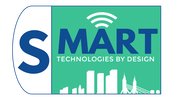|
This article is a continuation of an article we published in August 2020 - “Disruptive Technologies for Smart Cities – Cloud Computing” for the presentation of the interim results of the ongoing Erasmus+ project Smart technologies by design (Smart by Design). The article is based on the materials produced by the project partners GAIA & DEUSTO. Current StatusData Analytics is the approach that allows companies to analyse the data they generate in their activity enabling them to draw conclusions that affect their business. Better known as Big Data, companies manage this information in order to adopt strategies that will help them to improve their business turnover. Thus, it helps them improve operational efficiency, customer user experience and also allows them to improve their business models. All these data generated by companies in their activity is one of the concerns they have to face today. They should evaluate the importance of this information, what information they will have to store or even what part of all these data they can sell. Data analysis means the translation of information into opportunities for companies to take advantage of all these data (Schneider. 2017). This is why, “Data Analytics” is also called as a translator or business generator, because it allows to explore personalised solutions to carry out your projects. At present, information as services is a business model that is expanding wherein increasingly more businesses are seeking to monetise the information they obtain. According to the International Statistical Institute, businesses that use information will see their productivity increase by 430 billion dollars by 2020 in contrast with those that do not use it. Existing PlatformsServices offered by platforms related to information analysis is growing along with new solutions in terms of storage capacities as well as processing. Some of the platforms that currently exist are as follows: Existing StandardsThe first standard on big data was published in the end of 2015 by the International Telecommunication Union (ITU), hence, there are already international rules and standards. ITU-T Y.3600: provides requisites, capabilities and use cases of cloud computing based big data (Y.BigDatareqts, 2015). Big Data when merged with Cloud Computing offers the ability to collect, store, analyse, visualise and handle large amounts of data, which cannot be analysed with traditional technologies (Iglesias. A, 2015).
|
AuthorSmart by Design Archives
September 2021
Categories
All
|
|
The SMART by Technologies Design project [SMART by Design] Project No. 2019-1-BG01-KA202-062298 has been co-funded by the Erasmus+ Programme of the European Union.
This website reflects the views only of the author, and the European Commission cannot be held responsible for any use which may be made of the information contained therein |
SMART BY DESIGN |
SUPPORT |
Copyright ®2020 SMART BY DESIGN. All rights reserved.



 RSS Feed
RSS Feed
